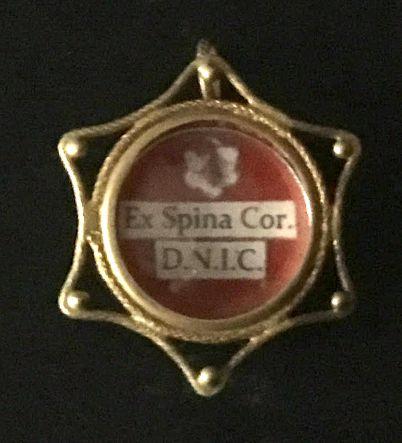
From the Crown of Thorns
The ring of canes that makes up the base of the Crown of Thorns worn by Jesus Christ during the Passion can now be found at the Cathédrale Notre Dame de Paris (2010). Its diameter is 8.5 inches (21cm). The Crown was carried to France from Venice by two Dominican friars in August 1239 and eventually placed in the Sainte-Chapelle,[1] after Saint Louis IX had redeemed it for 13,134 gold ducats from Baldwin II, the Emperor of Constantinople.
Baldwin had pawned the Crown of Thorns as security with a Venetian bank for the money he needed to borrow, to support his crumbling empire. The Crown had been housed in the Basilica of Hagia Zion in Jerusalem since 409, until it was translated to Constantinople during the Crusades. The Crown had been braided from the rushes of the Juncus balticus,[2] while the thorns attached to it by the Roman soldiers were from the Ziziphus spina-christi.[3]
Numerous thorns have been splintered off from the Crown throughout the centuries and distributed widely around the world. More notable are those held at Saint Michael’s Church, in Ghent, Belgium; the Cathedral of Saint Vitus in Prague, Czech Republic; the Cathedral of Trier, Germany; the Basilica della Santa Croce in Gerusalemme, Rome, Italy; the Cathedral of Oviedo, Spain; the British Museum, England; and Saint Anthony’s Chapel in Pittsburgh, Pennsylvania, United States of America (Gazetteer of Relics and Miraculous Images, 2009). Above is a photograph of a relic from the Crown of Thorns in a sealed reliquary that comes from the Augustinians.
———-
[1] The Sainte-Chapelle was built specifically by Saint Louis IX to house the Crown of Thorns and 28 other relics he had received from Baldwin II.
[2] Baltic rush taken from the Jucaceae perennial flowering plant native to Northern Britain, the Baltic and Scandinavia.
[3] Christ’s thorn jujube, an evergreen plant native to Africa, the Middle East, Southern and Western Asia.

